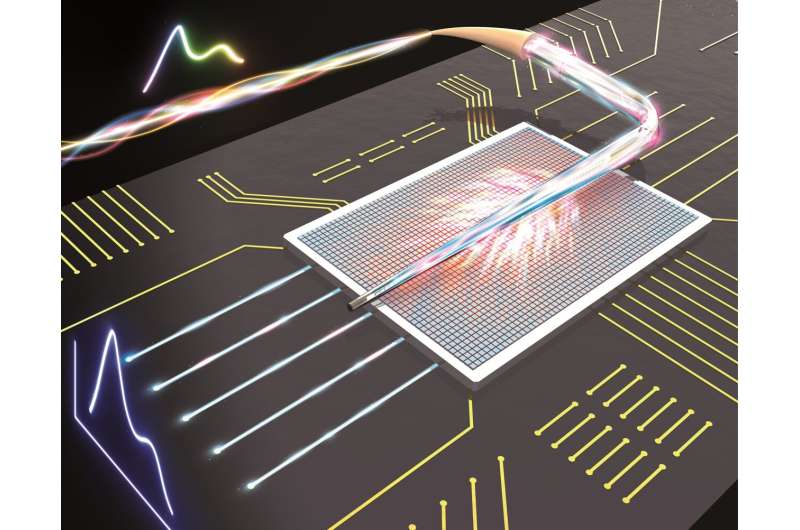This article has been reviewed according to Science X's editorial process and policies. Editors have highlighted the following attributes while ensuring the content's credibility:
fact-checked
trusted source
proofread
Study: No need for a leaky mode at the picometer level for microtapers

The precision of obtaining abundant light-matter-interact information with a snapshot measurement makes optical spectroscopy indispensable for modern industries and scientific research. The miniaturization of traditionally bulky spectrometers has been strongly motivated by the vast applications, including bio/medical sensing, material analysis, optical communication, and light source characterization.
Researchers have been engineering spectrometers for lower cost, higher flexibilities, smaller size, better stabilities, and performances for quite some time. However, an inherent trade-off between the above aspects constrains this long-term theme of miniaturization from advancing. Generally, spectrometers with dispersive elements require extra spatial separations and tend to leave a large footprint.
Filters (including narrowband and reconstructive types) based designs suffer from power loss caused by either absorption or reflection and limited resolution and bandwidth due to limited channel numbers. On-chip spectrometers rely on nanofabrication and tend to have very low coupling efficiency for wideband operation.
Above all, a flexible and low-cost tiny spectrometer with stable high performance is still elusive.
In a new paper published in eLight, a team of scientists led by Professor Yaoguang Ma from Zhejiang University have developed a compact spectrometer that integrates multiple taper tips for hyperspectral imaging.
The spectrometer utilizes complex leaky modes speckles projected from a curved microfiber taper tip that uniquely determines the wavelength of the input signal. By solid packaging with a complementary metal-oxide semiconductor (CMOS) imaging sensor, the data acquisition of our spectrometer can be finished using a single snapshot with no external equipment needed.
A lightweight vision transformer (ViT) network was used for analyzing the complex frames recorded by the CMOS image sensor (CIS). The correlation between the spectral information and leaky mode images can be easily constructed after training. In addition, this tiny high-performance device is fabricated with low-cost elements (the core components of the spectrometer cost less than US$15). It could be used over long intervals while maintaining accuracy and reliability.
Multimode interferences could generate random speckles which are associated with spectra information. However, most spectrometer designs based on it rely on random mediums such as rough surfaces, multimode fiber, integrating spheres, or photonic crystals. These usually require additional bulky or expensive equipment, such as a high-performance camera or even a microscope, to complete the measurement.
On the other hand, microfibers are ideal tools for manipulating light fields of their tailorable dispersion and small footprint. Experiments usually use microfibers for confining light inside the fiber to propagate as long as possible. If a microfiber taper is drawn under non-adiabatic conditions, coupling between different mode induced by the fiber geometry will generate leaky modes that are typically undesired for microfiber applications.
However, researchers from Zhejiang University managed to utilize the leaky mode by studying the induced random speckles to recover the hidden spectral information, while engineering the drawing conditions of the taper to maximize the leaky modes generation within a 1 mm taper region. The spectrometer can operate within 0.3-1 mm region. An ~1.5 pm resolution can be achieved with a snapshot measurement.
The demonstrated low-cost, scalable spectrometer also can be implemented at scale on one CIS chip to demonstrate hyperspectral imaging. The high agreement between data from the proposed microtaper hyperspectral imager and data from the conventional spectrometer shows great potential for their design.
More information: Qingqing Cen et al, Microtaper leaky-mode spectrometer with picometer resolution, eLight (2023). DOI: 10.1186/s43593-023-00041-7
Provided by Chinese Academy of Sciences





















